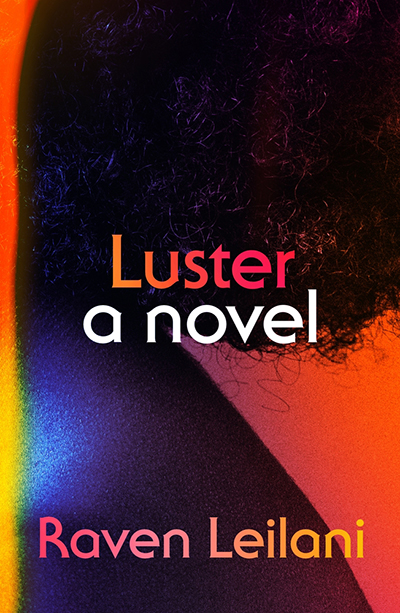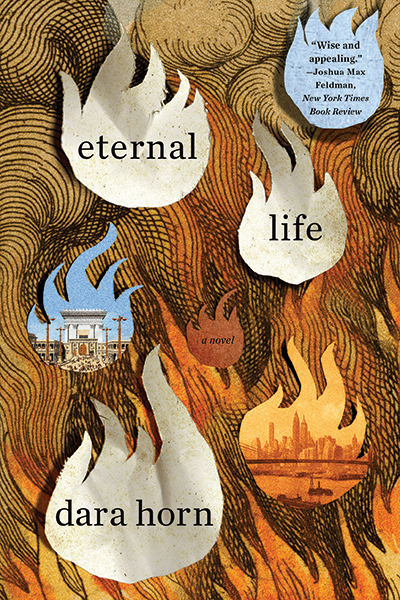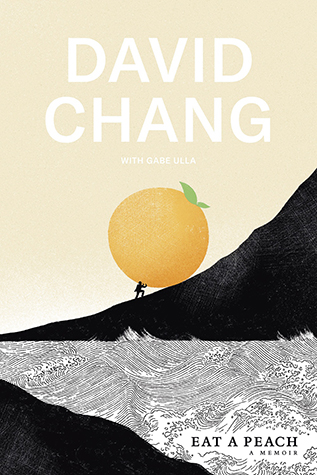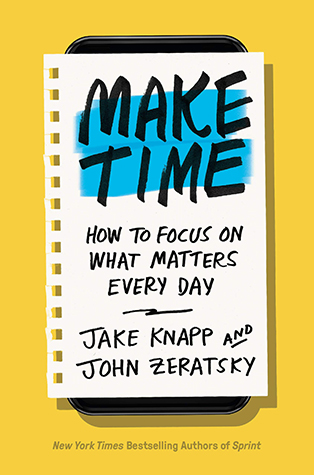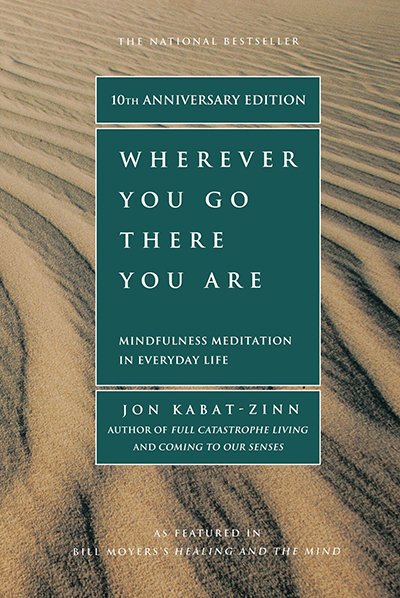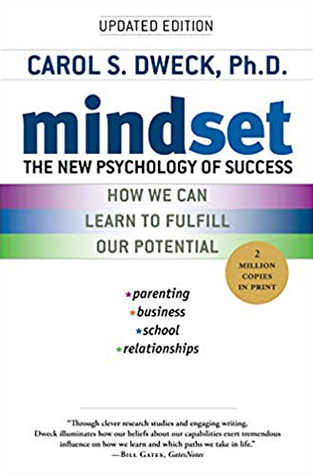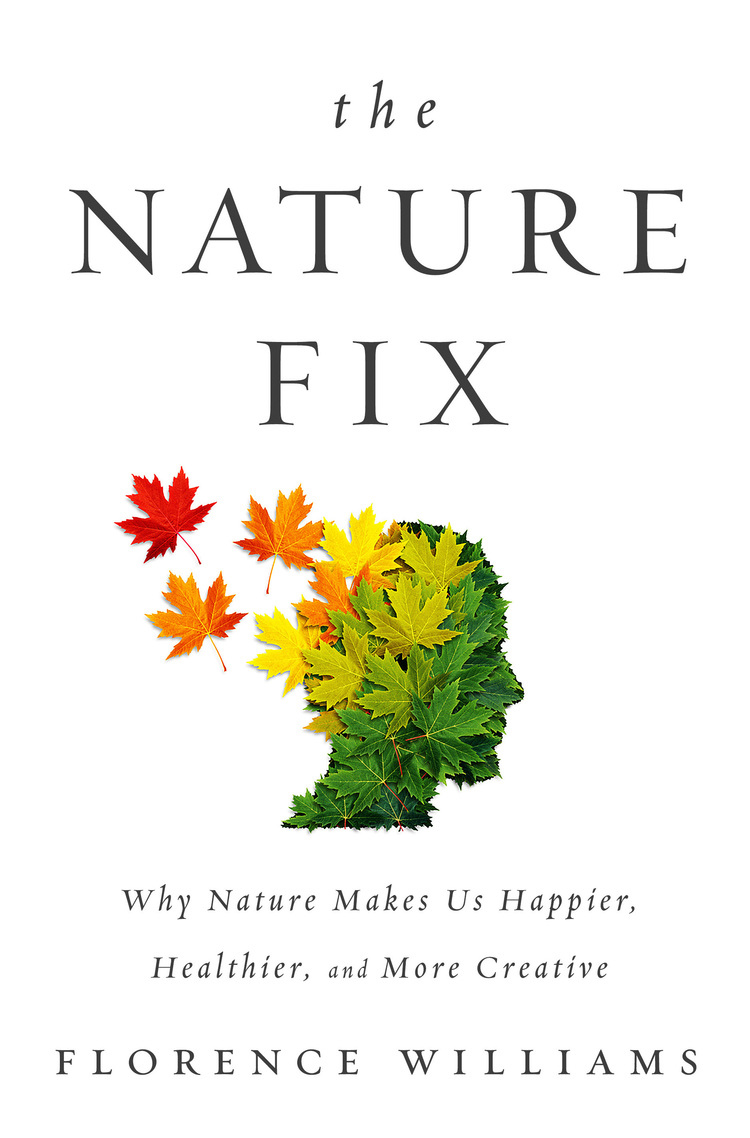-
When it comes right down to it, wherever you go, there you are. Whatever you wind up doing, that’s what you’ve wound up doing. Whatever you are thinking right now, that’s what’s on your mind. Whatever has happened to you, it has already happened. The important question is, how are you going to handle it? In other words, “Now what?”
-
Like it or not, this moment is all we really have to work with.
-
Meditation may help us see that this path we call our life has direction; that it is always unfolding, moment by moment; and that what happens now, in this moment, influences what happens next.
-
“Be a light unto yourself.”
-
Buddhism is fundamentally about being in touch with your own deepest nature and letting it flow out of you unimpeded.
-
A good way to stop all the doing is to shift into the “being mode” for a moment. Think of yourself as an eternal witness, as timeless. Just watch this moment, without trying to change it at all. What is happening? What do you feel? What do you see? What do you hear?
-
The funny thing about stopping is that as soon as you do it, here you are. Things get simpler. In some ways, it’s as if you died and the world continued on. If you did die, all your responsibilities and obligations would immediately evaporate. Their residue would somehow get worked out without you. No one else can take over your unique agenda. It would die or peter out with you just as it has for everyone else who has ever died. So you don’t need to worry about it in any absolute way. If this is true, maybe you don’t need to make one more phone call right now, even if you think you do. Maybe you don’t need to read something just now, or run one more errand. By taking a few moments to “die on purpose” to the rush of time while you are still living, you free yourself to have time for the present. By “dying” now in this way, you actually become more alive now. This is what stopping can do. There is nothing passive about it. And when you decide to go, it’s a different kind of going because you stopped. The stopping actually makes the going more vivid, richer, more textured. It helps keep all the things we worry about and feel inadequate about in perspective. It gives us guidance.
-
TRY: Stopping, sitting down, and becoming aware of your breathing once in a while throughout the day. It can be for five minutes, or even five seconds. Let go into full acceptance of the present moment, including how you are feeling and what you perceive to be happening. For these moments, don’t try to change anything at all, just breathe and let go. Breathe and let be. Die to having to have anything be different in this moment; in your mind and in your heart, give yourself permission to allow this moment to be exactly as it is, and allow yourself to be exactly as you are. Then, when you’re ready, move in the direction your heart tells you to go, mindfully and with resolution.
-
Meditation is the only intentional, systematic human activity which at bottom is about not trying to improve yourself or get anywhere else, but simply to realize where you already are. Perhaps its value lies precisely in this. Maybe we all need to do one thing in our lives simply for its own sake.
-
Remind yourself that acceptance of the present moment has nothing to do with resignation in the face of what is happening. It simply means a clear acknowledgment that what is happening is happening.
-
Is it possible for you to contemplate that in a very real way, this may actually be the best season, the best moment of your life?
-
The best way to capture moments is to pay attention.
-
Look at other people and ask yourself if you are really seeing them or just your thoughts about them.
-
Stress is part of life, part of being human, intrinsic to the human condition itself. But that does not mean that we have to be victims in the face of large forces in our lives. We can learn to work with them, understand them, find meaning in them, make critical choices, and use their energies to grow in strength, wisdom, and compassion. A willingness to embrace and work with what is lies at the core of all meditation practice.
-
People who don’t understand meditation think that it is some kind of special inner manipulation which will magically shut off these waves so that the mind’s surface will be flat, peaceful, and tranquil. But just as you can’t put a glass plate on the water to calm the waves, so you can’t artificially suppress the waves of your mind, and it is not too smart to try. It will only create more tension and inner struggle, not calmness. That doesn’t mean that calmness is unattainable. It’s just that it cannot be attained by misguided attempts to suppress the mind’s natural activity.
-
It is possible through meditation to find shelter from much of the wind that agitates the mind. Over time, a good deal of the turbulence may die down from lack of continuous feeding. But ultimately the winds of life and of the mind will blow, do what we may. Meditation is about knowing something about this and how to work with it.
-
I love a broad margin to my life.
-
The flavor and the sheer joy of non-doing are difficult for Americans to grasp because our culture places so much value on doing and on progress. Even our leisure tends to be busy and mindless. The joy of non-doing is that nothing else needs to happen for this moment to be complete.
-
Non-doing has nothing to do with being indolent or passive. Quite the contrary. It takes great courage and energy to cultivate non-doing, both in stillness and in activity. Nor is it easy to make a special time for non-doing and to keep at it in the face of everything in our lives which needs to be done.
-
But non-doing doesn’t have to be threatening to people who feel they always have to get things done. They might find they get even more “done,” and done better, by practicing non-doing. Non-doing simply means letting things be and allowing them to unfold in their own way.
-
Effortless activity happens at moments in dance and in sports at the highest levels of performance; when it does, it takes everybody’s breath away. But it also happens in every area of human activity, from painting to car repair to parenting. Years of practice and experience combine on some occasions, giving rise to a new capacity to let execution unfold beyond technique, beyond exertion, beyond thinking. Action then becomes a pure expression of art, of being, of letting go of all doing—a merging of mind and body in motion. We thrill in watching a superb performance, whether athletic or artistic, because it allows us to participate in the magic of true mastery, to be uplifted, if only briefly, and perhaps to share in the intention that each of us, in our own way, might touch such moments of grace and harmony in the living of our own lives.
-
TRY: During the day, see if you can detect the bloom of the present moment in every moment, the ordinary ones, the “in-between” ones, even the hard ones. Work at allowing more things to unfold in your life without forcing them to happen and without rejecting the ones that don’t fit your idea of what “should” be happening.
-
After all, if you really aren’t trying to get anywhere else in this moment, patience takes care of itself. It is a remembering that things unfold in their own time. The seasons cannot be hurried. Spring comes, the grass grows by itself. Being in a hurry usually doesn’t help, and it can create a great deal of suffering—sometimes in us, sometimes in those who have to be around us.
-
Patience is an ever present alternative to the mind’s endemic restlessness and impatience. Scratch the surface of impatience and what you will find lying beneath it, subtly or not so subtly, is anger. It’s the strong energy of not wanting things to be the way they are and blaming someone (often yourself) or something for it.
-
…things unfold according to their own nature.
-
We don’t have to let our anxieties and our desire for certain results dominate the quality of the moment, even when things are painful. When we have to push, we push. When we have to pull, we pull. But we know when not to push too, and when not to pull.
-
TRY: Looking into impatience and anger when they arise. See if you can adopt a different perspective, one which sees things as unfolding in their own time. This is especially useful when you are feeling under pressure and blocked or stymied in something you want or need to do. Hard as it may seem, try not to push the river in that moment but listen carefully to it instead. What does it tell you? What is it telling you to do? If nothing, then just breathe, let things be as they are, let go into patience, continue listening. If the river tells you something, then do it, but do it mindfully. Then pause, wait patiently, listen again.
-
Fear that I’m not good enough, that bad things will happen, that good things won’t last, that other people might hurt me, that I won’t get my way, that only I know anything, that I’m the only one who doesn’t know anything. We tend to see things through tinted glasses: through the lens of whether something is good for me or bad for me, or whether or not it conforms to my beliefs or philosophy. If it is good, I like it. If it is bad, I don’t like it. If it is neither, I have no feelings about it one way or the other, and may hardly notice it at all.
-
See if you can be in touch with a core within you which is rich beyond reckoning in all important ways. Let that core start radiating its energy outwardly, through your entire body, and beyond. Experiment with giving away this energy—in little ways at first—directing it toward yourself and toward others with no thought of gain or return. Give more than you think you can, trusting that you are richer than you think. Celebrate this richness. Give as if you had inexhaustible wealth. This is called “kingly giving.”
-
At the deepest level, there is no giver, no gift, and no recipient…only the universe rearranging itself.
-
The impulse frequently arises in me to squeeze another this or another that into this moment.
-
But in the Western cultural mainstream, you will find precious little support for choosing such a personal path of discipline and constancy, especially such an unusual one involving effort but non-doing, energy but no tangible “product.”
-
If you hope to bring meditation into your life in any kind of long-term, committed way, you will need a vision that is truly your own—one that is deep and tenacious and that lies close to the core of who you believe yourself to be, what you value in your life, and where you see yourself going.
-
The ways in which we need to grow are usually those we are the most supremely defended against and are least willing to admit even exist, let alone take an undefended, mindful peek at and then act on to change.
-
If you believe in love, do you manifest it or just talk a lot? If you believe in compassion, in non-harming, in kindness, in wisdom, in generosity, in calmness, in solitude, in non-doing, in being even-handed and clear, do you manifest these qualities in your daily life?
-
TRY: Asking yourself why you meditate or why you want to meditate. Don’t believe your first answers. Just write down a list of whatever comes to mind. Continue asking yourself. Also, inquire about your values, about what you honor most in life. Make a list of what is really important to you. Ask yourself: What is my vision, my map for where I am and where I am going? Does this vision reflect my true values and intentions? Am I remembering to embody those values? Do I practice my intentions? How am I now in my job, in my family, in my relationships, with myself? How do I want to be? How might I live my vision, my values? How do I relate to suffering, both my own and others’?
-
If your life were a book, what would you call it today? What would you entitle the chapter you are in right now? Are you stuck here in certain ways? Can you be fully open to all of the energies at your disposal at this point?
-
You cannot imitate somebody else’s journey and still be true to yourself. Are you prepared to honor your uniqueness in this way?
-
TRY: The next time you feel a sense of dissatisfaction, of something being missing or not quite right, turn inward just as an experiment. See if you can capture the energy of that very moment. Instead of picking up a magazine or going to the movies, calling a friend or looking for something to eat or acting up in one way or another, make a place for yourself. Sit down and enter into your breathing, if only for a few minutes. Don’t look for anything—neither flowers nor light nor a beautiful view. Don’t extol the virtues of anything or condemn the inadequacy of anything. Don’t even think to yourself, “I am going inward now.” Just sit. Reside at the center of the world. Let things be as they are.
-
So, at the beginning, you might want to stay with the breath, or use it as an anchor to bring you back when you are carried away. Try it for a few years and see what happens.
-
TRY: Setting aside a time every day for just being. Five minutes would be fine, or ten or twenty or thirty if you want to venture that far. Sit down and watch the moments unfold, with no agenda other than to be fully present. Use the breath as an anchor to tether your attention to the present moment. Your thinking mind will drift here and there, depending on the currents and winds moving in the mind until, at some point, the anchorline grows taut and brings you back. This may happen a lot. Bring your attention back to the breath, in all its vividness, every time it wanders. Keep the posture erect but not stiff. Think of yourself as a mountain.
-
It is doubtful that we came to feel undeserving on our own. We were helped to feel unworthy. We were taught it in a thousand ways when we were little, and we learned our lessons well.
-
TRY: Sitting with dignity for thirty seconds. Note how you feel. Try it standing with dignity. Where are your shoulders? How is your spine, your head? What would it mean to walk with dignity?
-
Practicing over and over again embodying dignity, stillness, an unwavering equanimity in the face of any mind state which presents itself, especially when you are not in a grave state of distress or turmoil, can provide a solid, reliable foundation for maintaining mindfulness and equanimity, even in periods of extreme stress and emotional turmoil. But only if you practice, practice, practice.
-
Although it is tempting to do so, you can’t just think that you understand how to be mindful, and save using it for only those moments when the big events hit. They contain so much power they will overwhelm you instantly…
-
Try sitting with your hands palms down on your knees. Notice the quality of self-containment here. To me, this posture speaks of not looking for anything more, but simply digesting what is. If you then turn both palms up, being mindful as you do it, you may note a change in energy in the body. To me, sitting this way embodies receptivity, an openness to what is above, to the energy of the heavens.
-
It can be quite helpful at times, especially in periods of turmoil or confusion, to emphasize receptivity in your sitting practice.
-
TRY: Bringing awareness to how you end your meditations. Whether they are lying down, sitting, standing, or walking, zero in on “who” ends it, how it ends, when it ends, and why. Don’t judge it or yourself in any way—just observe, and stay in touch with the transition from one thing to the next.
-
The sincerity of your effort matters far more than elapsed time…
-
TRY: Being aware of all the times in meditation when the thought comes up: “Am I doing this right?” “Is this what I should be feeling?” “Is this what is ‘supposed’ to happen?” Instead of trying to answer these questions, just look more deeply into the present moment.
-
Rarely do we contemplate our life with this degree of probing. How frequently do we linger in such basic questions as “Who am I?”, “Where am I going?”, “What path am I on?”, “Is this the right direction for me?”, “If I could choose a path now, in which direction would I head?”, “What is my yearning, my path?”, “What do I truly love?”…Contemplating “What is my Way?” is an excellent element to inject into our meditation practice. We don’t have to come up with answers, nor think that there has to be one particular answer. Better not to think at all. Instead, only persist in asking the question, letting any answers that formulate just come of themselves and go of themselves. As with everything else in the meditation practice, we just watch, listen, note, let be, let go, and keep generating the question, “What is my Way?”, “What is my path?”, “Who am I?”
-
The intention here is to remain open to not knowing, perhaps allowing yourself to come to the point of admitting, “I don’t know,” and then experimenting with relaxing a bit into this not knowing instead of condemning yourself for it. After all, in this moment, it may be an accurate statement of how things are for you.
-
By becoming the mountain in our meditation, we can link up with its strength and stability, and adopt them for our own. We can use its energies to support our efforts to encounter each moment with mindfulness, equanimity, and clarity. It may help us to see that our thoughts and feelings, our preoccupations, our emotional storms and crises, even the things that happen to us are much like the weather on the mountain.
-
TRY: Keeping this mountain image in mind as you sit in formal meditation. Explore its usefulness in deepening your capacity to dwell in stillness; to sit for longer periods of time; to sit in the face of adversity, difficulties, and storms or drabness in the mind.
-
Can you see some subtle transformation occurring in your attitude toward things that change in your life? Can you carry the mountain image with you in daily life? Can you see the mountain in others, and allow them their own shape and form, each mountain uniquely itself?
-
Water also has the enchanting quality of receptivity. It parts to allow anything in, then resumes itself.
-
To practice using the lake image in your meditation, picture in your mind’s eye a lake, a body of water held in a receptive basin by the earth itself.
-
When you have established a picture of the lake in your mind’s eye, allow yourself to become one with the lake as you lie down on your back or sit in meditation, so that your energies are held by your awareness and by your openness and compassion for yourself in the same way as the lake’s waters are held by the receptive and accepting basin of the earth herself.
-
TRY: Noticing the difference in how you feel and how you handle stress in periods when you are into the discipline of daily meditation and yoga practice and in periods of your life when you are not.
-
We resonate with one another’s sorrows because we are interconnected. Being whole and simultaneously part of a larger whole, we can change the world simply by changing ourselves. If I become a center of love and kindness in this moment, then in a perhaps small but hardly insignificant way, the world now has a nucleus of love and kindness it lacked the moment before.
-
Start by centering yourself in your posture and in your breathing. Then, from your heart or from your belly, invite feelings or images of kindness and love to radiate until they fill your whole being. Allow yourself to be cradled by your own awareness as if you were as deserving of loving kindness as any child. Let your awareness embody both benevolent mother energy and benevolent father energy, making available for you in this moment a recognition and an honoring of your being, and a kindness you perhaps did not receive enough of as a child. Let yourself bask in this energy of loving kindness, breathing it in and breathing it out, as if it were a lifeline, long in disrepair but finally passing along a nourishment you were starving for. Invite feelings of peacefulness and acceptance to be present in you. Some people find it valuable to say to themselves from time to time such things as: “May I be free from ignorance. May I be free from greed and hatred. May I not suffer. May I be happy.” But the words are just meant to evoke feelings of loving kindness. They are a wishing oneself well—consciously formed intentions to be free now, in this moment at least, from the problems we so often make for ourselves or compound for ourselves through our own fear and forgetfulness.
-
You can also take the practice further. Having established a radiant center in your being, you can let loving kindness radiate outwardly and direct it wherever you like.
-
You can direct loving kindness toward anybody, toward people you know and people you don’t. It may benefit them, but it will certainly benefit you by refining and extending your emotional being. This extension matures as you purposefully direct loving kindness toward people you have a hard time with, toward those you dislike or are repulsed by, toward those who threaten you or have hurt you. You can also practice directing loving kindness toward whole groups of people—toward all those who are oppressed, or who suffer, or whose lives are caught up in war or violence or hatred, understanding that they are not different from you—that they too have loved ones, hopes and aspirations, and needs for shelter, food, and peace. And you can extend loving kindness to the planet itself, its glories and its silent suffering, to the environment, the streams and rivers, to the air, the oceans, the forests, to plants and animals, collectively or singly.
-
When you can love one tree or one flower or one dog or one place, or one person or yourself for one moment, you can find all people, all places, all suffering, all harmony in that one moment.
-
Practicing in this way is not trying to change anything or get anywhere, although it might look like it on the surface. What it is really doing is uncovering what is always present. Love and kindness are here all the time, somewhere, in fact, everywhere. Usually our ability to touch them and be touched by them lies buried below our own fears and hurts, below our greed and our hatreds, below our desperate clinging to the illusion that we are truly separate and alone.
-
We have only to flip a switch when the outer light begins to dim. We can light up the world as brightly as we want and keep going with our lives, filling all our waking hours with busyness, with doing. Life gives us scant time for being nowadays, unless we seize it on purpose. We no longer have a fixed time when we have to stop what we are doing because there’s not enough light to do it by…we lack that formerly built-in time we had every night for shifting gears, for letting go of the day’s activities. We have precious few occasions nowadays for the mind to settle itself in stillness by a fire.
-
Nature’s harmony is around us and within us at all times. Perceiving it is an occasion for great happiness; but it is often only appreciated in retrospect or in its absence. If all is going well in the body, it tends to go unnoticed. Your lack of a headache is not front-page news for your cerebral cortex. Abilities such as walking, seeing, thinking, and peeing take care of themselves, and so blend into the landscape of automaticity and unawareness. Only pain or fear or loss wake us and bring things into focus. But by then the harmony is harder to see, and we find ourselves caught up in turbulence, itself containing, like rapids and waterfalls, order of a more difficult and subtle level within the river of life.
-
The virtues of getting up early have nothing to do with cramming more hours of busyness and industry into one’s day. Just the opposite. They stem from the stillness and solitude of the hour, and the potential to use that time to expand consciousness, to contemplate, to make time for being, for purposefully not doing anything. The peacefulness, the darkness, the dawn, the stillness—all contribute to making early morning a special time for mindfulness practice.
-
If you can begin your day with a firm foundation in mindfulness and inner peacefulness, then when you do have to get going and start doing, it is much more likely that the doing will flow out of your being. You are more likely to carry a robust mindfulness, an inner calmness and balance of mind with you throughout the day, than had you just jumped out of bed and started in on the call of demands and responsibilities, however pressing and important.
-
I especially try to make time for formal practice, if just for a few minutes, on days when momentous events happen, happy or distressing, when my mind and the circumstances are in turmoil, when there is lots to be done and feelings are running strong. In this way, I am less likely to miss the inner meaning of such moments, and I might even navigate through them a bit better.
-
TRY: Making a commitment to yourself to get up earlier than you otherwise might. Just doing it changes your life…You don’t want to fill this time with anything other than awareness. No need to go over the day’s commitments in your head and live “ahead” of yourself. This is a time of no-time, of stillness, of presence, of being with yourself…Also, at the moment of waking up, before getting out of bed, get in touch with your breath, feel the various sensations in your body, note any thoughts and feelings that may be present, let mindfulness touch this moment. Can you feel your breathing? Can you perceive the dawning of each in breath? Can you enjoy the feeling of the breath freely entering your body in this moment? Ask yourself: “Am I awake now?”
-
The romantic notion is that if it’s no good over here, you have only to go over there and things will be different. If this job is no good, change jobs. If this wife is no good, change wives. If this town is no good, change towns. If these children are a problem, leave them for other people to look after. The underlying thinking is that the reason for your troubles is outside of you—in the location, in others, in the circumstances. Change the location, change the circumstances, and everything will fall into place; you can start over, have a new beginning. The trouble with this way of seeing is that it conveniently ignores the fact that you carry your head and your heart, and what some would call your “karma,” around with you. You cannot escape yourself, try as you might.
-
Sooner or later, the same problems would arise if in fact they stem in large part from your patterns of seeing, thinking, and behaving. Too often, our lives cease working because we cease working at life, because we are unwilling to take responsibility for things as they are, and to work with our difficulties. We don’t understand that it is actually possible to attain clarity, understanding, and transformation right in the middle of what is here and now, however problematic it may be.
-
You can even blame yourself for it all and, in the ultimate escape from responsibility, run away feeling that you have made a hopeless mess of things, or that you are damaged beyond repair. In either case, you believe that you are incapable of true change or growth, and that you need to spare others any more pain by removing yourself from the scene.
-
It doesn’t matter whether you are using drugs or meditation, alcohol or Club Med, divorce or quitting your job. There can be no resolution leading to growth until the present situation has been faced completely and you have opened to it with mindfulness…
-
This, then, really is it…this place, this relationship, this dilemma, this job. The challenge of mindfulness is to work with the very circumstances that you find yourself in—no matter how unpleasant, how discouraging, how limited, how unending and stuck they may appear to be—and to make sure that you have done everything in your power to use their energies to transform yourself before you decide to cut your losses and move on. It is right here that the real work needs to happen.
-
TRY: To use ordinary, repetitive occasions in your own house as invitations to practice mindfulness. Going to the front door, answering the telephone, seeking out someone else in the house to speak with, going to the bathroom, getting the laundry out of the dryer, going to the refrigerator, can all be occasions to slow down and be more in touch with each present moment.
-
Eating is another good occasion for mindfulness practice. Are you tasting your food? Are you aware of how fast, how much, when, where, and what you are eating? Can you make your entire day as it unfolds into an occasion to be present or to bring yourself back to the present, over and over again?
-
[CW: suicidal ideation] Buckminster Fuller, the discoverer/inventor of the geodesic dome, at age thirty-two contemplated suicide for a few hours one night at the edge of Lake Michigan, as the story goes, after a series of business failures that left him feeling he had made such a mess of his life that the best move would be for him to remove himself from the scene and make things simpler for his wife and infant daughter. Apparently everything he had touched or undertaken had turned to dust in spite of his incredible creativity and imagination, which were only recognized later. However, instead of ending his life, Fuller decided (perhaps because of his deep conviction in the underlying unity and order of the universe, of which he knew himself to be an integral part) to live from then on as if he had died that night. Being dead, he wouldn’t have to worry about how things worked out any longer for himself personally and would be free to devote himself to living as a representative of the universe. The rest of his life would be a gift. Instead of living for himself, he would devote himself to asking, “What is it on this planet [which he referred to as Spaceship Earth] that needs doing that I know something about, that probably won’t happen unless I take responsibility for it?” He decided he would just ask that question continuously and do what came to him, following his nose. In this way, working for humanity as an employee of the universe at large, you get to modify and contribute to your locale by who you are, how you are, and what you do. But it’s no longer personal. It’s just part of the totality of the universe expressing itself.
-
Fuller never thought of himself as special in any sense, just a regular person who liked to play with ideas and with forms. His motto was: “If I can understand it, anybody can understand it.”
-
Insist on yourself; never imitate. Your own gift you can present every moment with the cumulative force of a whole life’s cultivation; but of the adopted talent of another you have only an extemporaneous half possession…. Do that which is assigned to you, and you cannot hope too much or dare too much.
— Ralph Waldo Emerson, Self-Reliance
-
In a way, that’s all any of us do when we teach. As best we can, we show others what we have seen up to now. It’s at best a progress report, a map of our experiences, by no means the absolute truth.
-
We might appreciate life more, people more, food more, opinions more, moments more, if we perceive, by our own looking more deeply into them, that everything we are in contact with connects us to the whole world in each moment, and that things and other people, and even places and circumstances, are only here temporarily. It makes now so much more interesting. In fact, it makes now everything.
-
Do you sometimes find that you are hard on yourself and put yourself down? Remember ahimsa in that moment. See it and let it go.
-
Do you push yourself beyond your limits with no regard for your body and your well-being? Ahimsa.
-
It is easy to relate with ahimsa to someone who doesn’t threaten you. The test is in how you will relate to a person or situation when you do feel threatened.
-
The willingness to harm or hurt comes ultimately out of fear. Non-harming requires that you see your own fears and that you understand them and own them.
-
We might begin by taking things a little less personally. When something happens, try to see it without the self-orientation, just for fun. Maybe it just happened. Maybe it’s not aimed at you. Watch your mind at such times. Is it getting into “I” this and “me” that? Ask yourself, “Who am I?” or, “What is this ‘I’ that is claiming ownership?”
-
Notice, too, that the self is impermanent. Whatever you try to hold on to that has to do with yourself eludes you. It can’t be held because it is constantly changing, decaying, and being reconstructed again, always slightly differently, depending on the circumstances of the moment. This makes the sense of self what is called in chaos theory a “strange attractor,” a pattern which embodies order, yet is also unpredictably disordered. It never repeats itself. Whenever you look, it is slightly different.
-
TRY: Watching your reactions in situations that annoy you or make you angry. Notice how even speaking of something “making” you angry surrenders your power to others. Such occasions are good opportunities to experiment with mindfulness as a pot into which you can put all your feelings and just be with them, letting them slowly cook, reminding yourself that you don’t have to do anything with them right away, that they will become more cooked, more easily digested and understood simply by holding them in the pot of mindfulness.
-
Can you allow this state of affairs to be okay and neither make yourself right or wrong?
-
Can you see how this practice might lead to knowing yourself in new ways, and freeing yourself from old, worn-out, limiting views?
-
Then you might go around thinking, maybe even saying, that you have gotten somewhere, that the meditation practice “works.” The ego wants to lay claim and take credit for this special feeling or understanding, whatever it is. As soon as this happens, you are no longer into meditation but into advertising. It is easy to get caught here, using meditation practice to support the self-inflation habit.
-
There is nothing wrong with feelings of boredom or staleness, or of not getting anywhere, just as there is nothing wrong with feeling that you are getting somewhere and in fact, your practice may well be showing signs of becoming deeper and more robust. The pitfall is when you inflate such experiences or thoughts and you start believing in them as special. It’s when you get attached to your experience that the practice arrests, and your development along with it.
-
All too commonly, some things are thought of as spiritual while others are excluded. Is science spiritual? Is being a mother or father spiritual? Are dogs spiritual? Is the body spiritual? Is the mind spiritual? Is childbirth? Is eating? Is painting, or playing music, or taking a walk, or looking at a flower? Is breathing spiritual, or climbing a mountain?
-
Mindfulness allows everything to shine with the luminosity that the word “spiritual” is meant to connote.
-
The great geneticist Barbara McClintock, whose research was both ignored and disdained by her male colleagues for so many years until it was finally recognized at age eighty with a Nobel Prize, spoke of “a feeling for the organism” in her efforts to unravel and understand the intricacies of corn genetics.
-
Perhaps ultimately, spiritual simply means experiencing wholeness and interconnectedness directly, a seeing that individuality and the totality are interwoven, that nothing is separate or extraneous. If you see in this way, then everything becomes spiritual in its deepest sense.
-
how easy it is to sleepwalk through and therefore miss much of our life, telling ourselves nice stories of who we are and where we are going, along the way to some deluded fantasy we may never reach and might never recover from were we to arrive.
-
The meditation practice itself is timeless, and it is deeply gratifying to see it taking root so deeply in our society at a time of such great inner and outer turmoil and confusion, and at a time of such ferocious time-acceleration, driven by the advent of the digital age and feeding our capacity for getting more and more done in less and less time, thereby dramatically increasing the risk of never being present with and for ourselves, of losing touch almost entirely with the domain of being. Nothing like this has ever been seen in the entire trajectory of humanity. The species itself is at a critical juncture, a tipping point, and mindfulness, our innate capacity for wakefulness and open-hearted presence and clear seeing, has never been more critically important.
